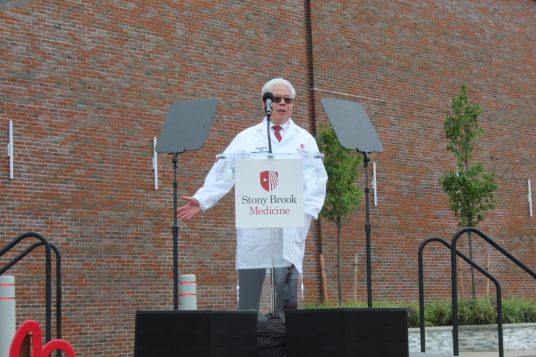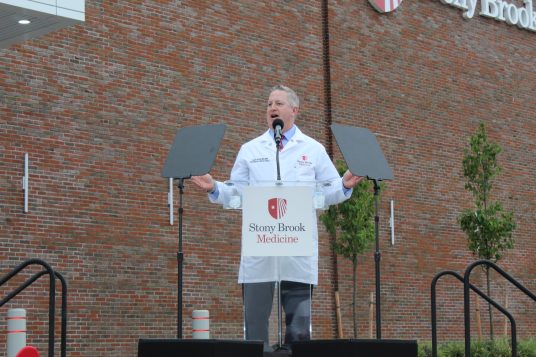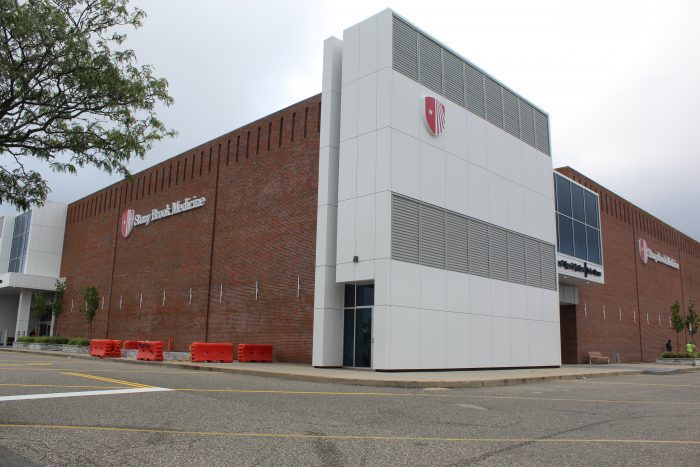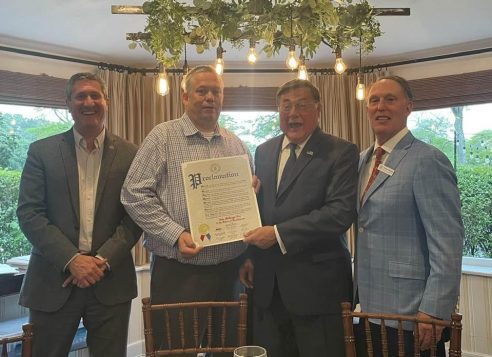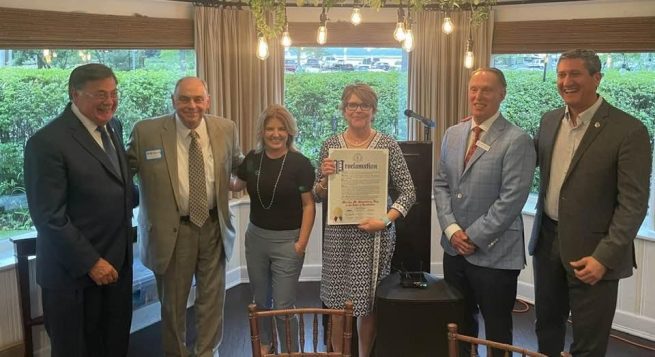By Carolyn Sackstein
In keeping with heightened media attention to the threat of shark bites, TBR News Media went to the streets on Saturday, July 8, asking visitors to Port Jefferson if they were concerned about reports of shark sightings and shark attacks on Long Island’s South Shore.
One person voiced fear of sharks. Another said she doesn’t like fish in general. The rest seemed confident that local authorities and lifeguards could minimize the risks from sharks and keep beachgoers safe.
— Photos by Carolyn Sackstein

Douglas Maze, Connecticut, and Dee Schmitt, Connecticut
When asked if they had changed their beach habits due to the recent reports of shark attacks, Douglas said, “Yes, I will not go to the beach or in the water because I have a fear of sharks.” When asked how long he feared sharks, he replied, “My whole life.”
Dee said, “Yes and no. I am more cautious now. I still go in the water, but only up to my knees. That’s about it.”

Lisa Freeman, Tarpon Springs, Florida, and Al Latchford, Clearwater, Florida
Lisa responded to our inquiries with, “Yes, I go to Clearwater Beach, which is in the Gulf of Mexico.” She also acknowledged that there are sharks in the Gulf and that she plans to go in the water while she is visiting Long Island. “I am going to Robert Moses [State Park] tomorrow. We heard there are shark sightings there.” When asked if sharks deter her from going in the water, she said, “No. We respect that it is their place. If we see them, we get out of their way.”
Al added, “As long as we are aware and watching out what is going on, I’m OK with going in the water. No fear, just caution.”

Mike and Lauren Librizzi, Lynbrook
Mike said, “I go to, more often than not, Atlantic Beach [in Hempstead].” When asked if he was concerned about the recent sightings and attacks, he replied, “Not as much. If the lifeguards are on duty, and you’re being smart by not going in too deep, you should be OK.”
Lauren won’t go in the water at the beach. She explained she does like the beach for the sun and sand: “We go to a beach club in Atlantic Beach. I just don’t like fish. If I can’t see my feet, I don’t go in. I do go into pools.”

Genie Weisman, Mount Sinai
When asked if she goes to any of the South Shore beaches, Genie offered, “Not very often. We’ve taken the kids to Corey Beach [on the Great South Bay].” She explained that not going to the beaches anymore is a matter of opportunity, not sharks. Genie suggested that the increase in shark sightings is likely, “the bunkers and the bait fish. [Sharks] are following their food.” She added that she is willing to go to a beach if the opportunity arises, “probably, as long as there are no red flags.”

Megan Wesolowski and Jake Hine, Port Jefferson Station
Megan said she goes to Cupsogue Beach. Jake also goes to Cupsogue and out in Montauk.
When asked why they chose those areas, Megan explained, “Nice sand, the water’s nice. They keep it clean.” When asked about the recent shark reports, they weren’t concerned. Megan said, “I hadn’t really thought about it.”
Jake continued, “We swim at our own risk either way — lifeguards or no lifeguards. We just like the towns over there. No change [in beach habits], still going in.”
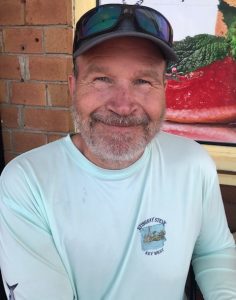
Gregg Fedus, Mystic, Connecticut
“I don’t really know about the local reports [on shark sightings and attacks] because I just came here yesterday and staying for the weekend. My guess is it’s overblown a little bit. You’ve just gotta be careful when you’re out on the water.” He feels the warmer water is drawing the sharks here. When asked if he would go into the water, he responded, “Sure.”

Trey Pratt, Old Saybrook, Connecticut
When asked if he fears sharks, he emphatically responded, “No!” When asked what is responsible for the reports of shark sightings, he felt it is due to “active media!” He fishes but has no problem going to any of the ocean beaches or fear of needing “a bigger boat.”




